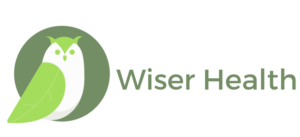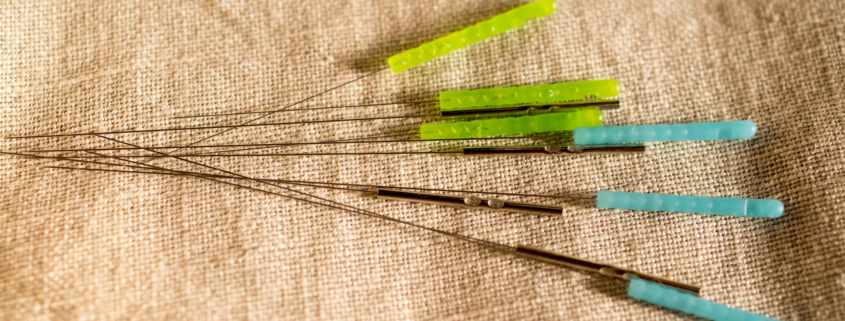Acupuncture is a part of traditional Chinese medicine and has been around for centuries. It is often used to effectively treat a variety of health conditions, including infertility. In recent years, acupuncture has become increasingly popular as a way to improve ovulation and increase the chances of getting pregnant. But does it actually work? In this article, we will take a closer look at acupuncture for ovulation and discuss the evidence for its effectiveness.
Anovulation, or lack of ovulation, is the cause of about 25% of infertility cases. It’s estimated that 1 in 10 women in their childbearing years will experience anovulation at some point.
Some signs of anovulation:
- Not having periods (amenorrhea). Missing one or more periods without being pregnant could be a sign of anovulation. It’s common for women with polycystic ovary syndrome (PCOS) to have no or very few periods.
- Irregular periods. The average menstrual cycle (from first day of the period to the first day of the following period) is 28 days, plus or minus a day or two. If the length of your cycle keeps changing, it’s considered irregular, and may indicate anovulation.
- Very heavy or very light periods. We don’t often compare our periods to our girlfriends’ periods. It’s not typical party conversation, so use the following as a gage. If you lose over 1/3 of a cup of blood or your period lasts more than 7 days, it’s a heavy period. If you lose just a little more than a tablespoon of blood or less, it’s considered light.
- Lack of cervical mucus. You should have a slippery discharge the consistency of raw egg white just before and during ovulation.
- Irregular basal body temperature. Your basal body temperature (BBT) is taken upon waking in the morning before you begin any sort of movement. That means it’s the first thing you do after you open your eyes. Your doctor typically couldn’t care less what your BBT chart shows, but it can be very informative for a practitioner who knows how to interpret them.
Some causes of anovulation:
- Elevated androgens (testosterone, androsterone, androstenedione). This is common in PCOS, adrenal issues and obesity.
- Pituitary gland disorders. This can occur with a very low body weight or BMI, participating in strenuous long-term exercise, pituitary tumor.
- Elevated prolactin levels. Prolactin is the hormone that stimulate breast milk production, which suppresses hormones needed for ovulation (LH and FSH).
- Underactive thyroid. This is known is hypothyroidism, and low levels of the active thyroid hormone known as thyroxine, or T4, can increase the amount of prolactin your body makes, thus suppressing LH and FSH, causing anovulation.
- Low levels of gonadotropin-releasing hormone (GnRH). This is the hormone that triggers the release of LH and FSH, which are needed for ovulation.
The most frequent reason a woman doesn’t ovulate is due to polycystic ovary syndrome (PCOS), which affects 4%-20% of women of reproductive age across the globe, making it one of the most common hormonal disorders. It’s estimated that 5 million women in the U.S. have it.
There is a fair amount of evidence to suggest that acupuncture can be helpful for ovulation in women with PCOS. One study, published in the journal Fertility and Sterility, looked at the effects of acupuncture on ovarian function in women with PCOS. The study found that acupuncture was able to improve both the quality and quantity of eggs produced by the ovaries. In addition, it also improved the overall menstrual cycle and reduced symptoms of PCOS such as hair growth and acne.
Acupuncture has also been shown to improve outcomes in women with poor ovarian response who are going through IVF. Adding electro-acupuncture increased the number of mature eggs and improved fertility rates, according to one study.
Acupuncture may influence FSH, LH and estradiol production in a way that has a balancing effect on the menstrual cycle, thus stimulating ovulation. While acupuncture is primarily a painless experience, It’s been shown that acupuncture influences beta-endorphins, which are opioid neuropeptides that play an important role in relief of pain and inflammation. Ovarian follicular fluid contains beta-endorphins, and PCOS ovaries contain higher levels than normal ovaries. This may be one mechanism for how acupuncture can promote ovulation, but further research is warranted.
Acupuncture is a difficult modality to confine to a traditional randomized controlled trial (RCT). Much of the literature regarding acupuncture and ovulation remains inconclusive, however we can’t disregard the fact that most of these studies compare a treatment group receiving a specific acupuncture protocol meant to encourage ovulation, while a control group receives sham acupuncture. With sham acupuncture, the patient still receives a treatment, but the needles are placed in points that are different from the treatment group that receives the protocol meant to cause ovulation. It’s been proven that sham acupuncture has its own effect on the person, and can’t be considered inert. It may inadvertently have a similar effect as the treatment group.
Bottom line – It’s worth exploring acupuncture to help with ovulation issues.
Find an acupuncturist who is specifically trained in reproductive health, has clinical experience, and clearly understands fertility cycles. For acupuncture in the Austin area, contact us or schedule an appointment. We are the wiser choice for natural fertility enhancement in Central Texas.
===================================================
SOURCES:
Aleem, F. A., Eltabbakh, G. H., Omar, R. A., & Southren, A. L. (1987). Ovarian follicular fluid β-endorphin levels in normal and polycystic ovaries. American journal of obstetrics and gynecology, 156(5), 1197-1200.
Anovulation. (2021, Aug 25). Cleveland Clinic. Retrieved January 30, 2022 from https://my.clevelandclinic.org/health/diseases/21698-anovulation.
Chen, B. Y., & Yu, J. (1991). RELATIONSHIP BETWEEN BLOOD RADIOIMMUNOREACTTVE BETA-ENDORPHIN AND HAND SKIN TEMPERATURE DURING THE ELECTRO-ACUPUNCTURE INDUCTION OF OVULATION. Acupuncture & electro-therapeutics research, 16(1-2), 1-5.
Deswal R, Narwal V, Dang A, Pundir CS. The Prevalence of Polycystic Ovary Syndrome: A Brief Systematic Review. J Hum Reprod Sci. 2020;13(4):261-271. doi:10.4103/jhrs.JHRS_95_18
Jang, S., Kim, K. H., Jun, J. H., & You, S. (2020). Acupuncture for in vitro fertilization in women with poor ovarian response: a systematic review. Integrative medicine research, 9(2), 100395.
Kusuma, A. C., Oktari, N., Mihardja, H., Srilestari, A., Simadibrata, C. L., Hestiantoro, A., … & Muna, N. (2019). Electroacupuncture enhances number of mature oocytes and fertility rates for in vitro fertilization. Medical acupuncture, 31(5), 289-297.
Mo, X., Li, D., Pu, Y., Xi, G., Le, X., & Fu, Z. (1993). Clinical studies on the mechanism for acupuncture stimulation of ovulation. Journal of traditional Chinese medicine = Chung i tsa chih ying wen pan, 13(2), 115–119.
Pastore, L. M., Williams, C. D., Jenkins, J., & Patrie, J. T. (2011). True and sham acupuncture produced similar frequency of ovulation and improved LH to FSH ratios in women with polycystic ovary syndrome. The Journal of Clinical Endocrinology & Metabolism, 96(10), 3143-3150.



